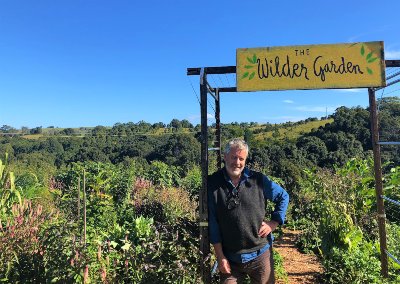
Pictured: Blair Beatie from 96 Bangalow
Why regenerative land management is key to healthy food and farmers
Just last month, Australia’s first glyphosate court case was confirmed. Michael Ogalirolo, a landscape gardener for 20 years, contracted non-Hodgkins lymphoma. They argue his constant exposure to the glyphosate-based weed killer, Roundup, caused his disease.
The Origilolo lawsuit comes on the back of recent judgements in the United States where there have been three successful lawsuits against Monsanto/ Bayer for Roundup's role in causing cancer.
So why are cancer-causing chemicals still being used in food production?
We talked to Blair Beattie from 96 Bangalow about regenerative land management and how it could help in removing chemicals from our food and water systems.
“The challenge for farmers is generational, big corporations such as Monsanto have done a fantastic job at spellbinding people,” Blair said.
“We are already starting to see the effects of glyphosate and the issue is going to get more serious as the years go on because it’s in our food and all of our systems. It’s water soluble so it travels everywhere. We need to find better farming practices.
“I’m a huge glyphosate hater and it will never touch this property again. You don’t need it.
96 Bangalow is a small farm on 86 acres just outside of Bangalow and they want to become a best-practice example of regenerative living.
“An example of the difference between sustainable and regenerative would be if I asked a mate, ‘How’s your relationship?’ and they reply, ‘It’s sustainable’, you’d think it was a bit sad.
“Regenerative land management surpasses sustainable. It’s about giving more back, adding biodiversity, adding to the soil which ultimately adds to people’s lives rather than making them sick.
They started 18 months ago with food, healthy proteins and healthy vegetables, revitalising the land, soil amendments, creating high biology in their growing systems and regenerating the land at the same time.
.jpg)
“We’ve planted more than 1200 trees and we’ve got a riparian zone around the permanent creek that runs through it which is predominantly camphor and privit but we’re changing that.
The 96 Bangalow market garden is positioned a little different than most. The produce goes to restaurants such as Harvest and One Green Acre as well as health food stores. Most of what you’ll find is niche or unique products that have different flavour or nutrient profiles.
“The Okinawa spinach is one of our favourites which is a perennial you can use fresh or cooked. It’s high in antioxidants so it offers a little more nutrient bang for your buck.
"We also have succulents which is an emerging market for restaurants. Things like karkalla and sea purslane, sun rose and a few other varieties. We have salt bush is mixed in with warrigal greens as well as well as bower spinach, which is a native and you don’t see that often.
On site there’s an innovation lab where well-known forager and food researcher, Peter Hardwick works with foraged and bush foods. Peter has more than 40 years of experience and also does the foraged food for Harvest.
“It’s kind of like ancient futures. A lot of the growing systems, especially syntropics, is based on how things have been growing for thousands of years and still are in Africa and Brazil today because they work.
"They’re symbiotic systems, where plantings help each other and feed each other, opening up different minerals and nutrients to other plants and the main thing is they’re high in biology and diversity of biology which means these wonderful funguses are making relationships with plants, offering nutrients, gaining sugars and carbon from them.
"Building those relationships under the ground is the basis for healthy and nutrient dense foods.
“Hopefully these court cases in Australia and the US will prompt a serious industry-wide assessment of the use of harmful chemicals in farming. Each day we’re proving that it’s easier to work with the land than work against it,” Blair said.
Got a story for the Hinterland post? Contact us.